How to Tell What Kind of Tree I Have
1 / 12
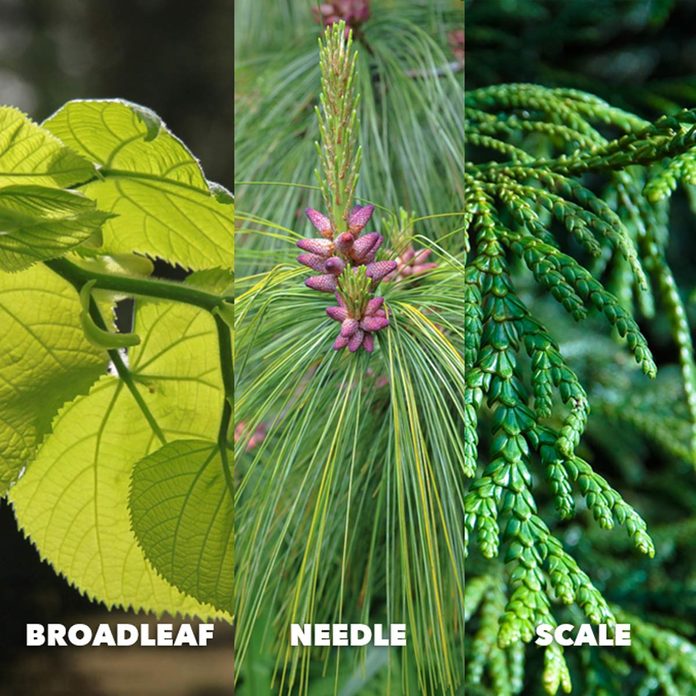
Leaf Identification Type
The starting signal for near people when identifying copse species is the leaves. There are three bones leaf types: needles, scales and broadleaf. Most evergreens take needles or scales, while most broadleaf trees are deciduous, meaning they drop their leaves when dormant. However, at that place are exceptions. Larch has green needles that turn color in fall and driblet off the tree. Live oak is an evergreen tree with broad, elliptical leaves.
Effort the Arbor Twenty-four hour period Foundation's online tree identification tool.
2 / 12

How to Place Copse By Leaf Shape
The shape of a foliage tin also give clues when identifying broadleaf tree species. Common leaf identification shapes include ovate (egg shaped), lanceolate (long and narrow), deltoid (triangular), obicular (circular) and cordate (heart shaped). There is also the palm-shaped maple foliage and the lobed oak leaf, 2 of our most recognizable foliage shapes.
See 11 copse with great fall leaf.
3 / 12
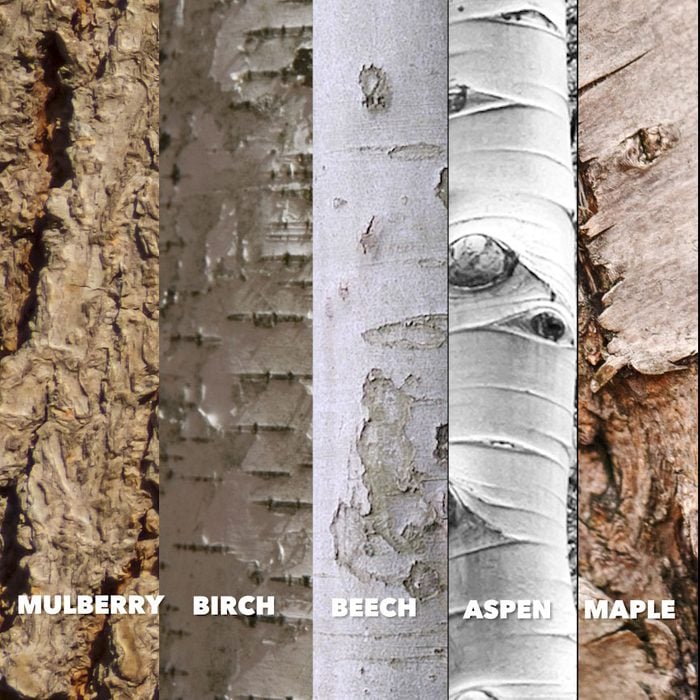
How to Identify Trees By Bark Color
Ask most people to describe a tree's bark and they'll say "gray" or "brownish" and leave information technology at that. While many tree species indeed have gray bark, some have bark that is cinnamon (mulberry), pure white (birch), silver (beech), greenish white (aspen) or copper (paperbark maple) in color.
four / 12

How to Identify Trees Past Bark Texture
There are many variations in texture between different tree species, equally well. Bark can exist furrowed (cottonwood), scaly (sycamore), peeling (hickory), smoothen (beech), shiny (reddish), papery (birch) or warty (hackberry).
Acquire how to make a shade tree thrive.
five / 12

Bark Variations With Age
Often the color and texture of the bark change as the tree matures. This is well-nigh noticeable on the trunk—the oldest part of the tree. Silver maple, for instance, will go from smooth and silver to furrowed and gray and blackness every bit it grows older, as the photo shows.
half dozen / 12
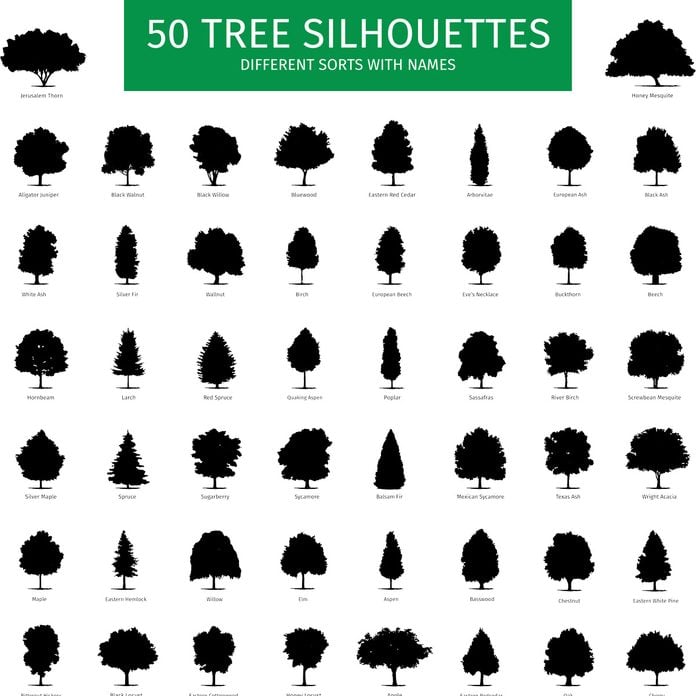
How to Identify Trees Past Tree Shape
Some copse have a distinctive shape. Recall of the vaselike habit of an American elm tree or the pyramid silhouette of a sweet gum. In some cases, the addiction changes as the tree matures—frequently becoming more rounded or irregular—but shape tin can help with identifying younger trees that are grown in open space (as opposed to a wooded setting, which encourages taller, narrower growth).
You lot can train a tree's shape to your liking. Meet our tree pruning techniques.
vii / 12

Tree Size and Location: What tree is this?
If you're trying to identify copse species in a natural setting, you can study the site. Nature knows what information technology's doing, distributing copse where they will thrive. Some species, such equally willow, are more probable to grow virtually h2o. While others, such as black locust, are more upland tree species. A mature tree'southward size can also assistance you whittle downwardly the possibilities. If it's lx feet tall and 40 anxiety broad, you know it'south more apt to be an oak than a dogwood.
Not certain there's room for a tree in your one thousand? Come across some space-saving trees for today's smaller gardens.
8 / 12
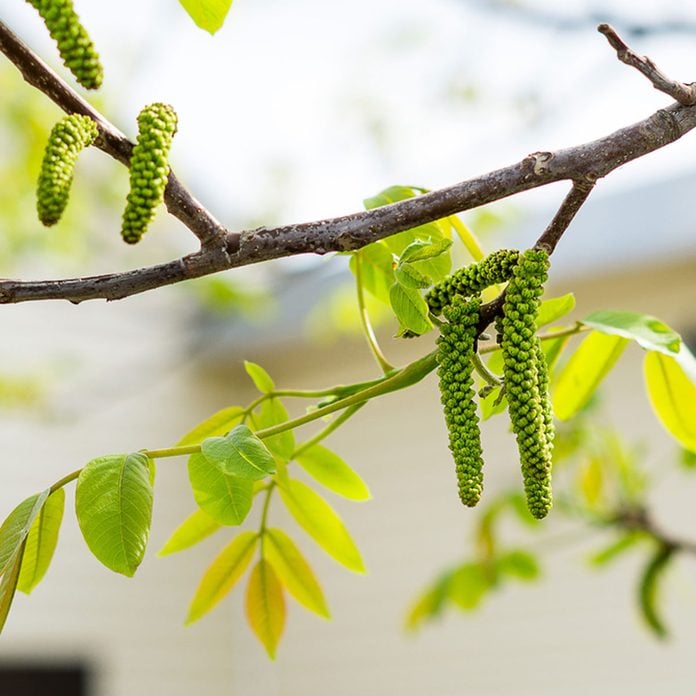
How to Identify Trees Past Flowers
While there'due south a whole class known as flowering trees (everything from crabapples to magnolias), other tree species have camouflaged flowers. Either mode, flowers can aid with identification. Kickoff, consider the color (although this isn't a fail-safe method, since plant breeders accept expanded the color palette in the cultivars they have developed). More helpful is to consider when the flower appears and what it looks like. Blossom types include unmarried blooms, amassed blooms or catkins (pictured), which are dense hanging spikes that look like tassels. Many copse blossom in spring, just some flower in summertime or fifty-fifty early autumn, helping you eliminate certain tree species as you investigate.
9 / 12

How to Place Trees Past Fruit Type
When you recollect of fruit, yous probably retrieve of larger fleshy fruits with seeds inside (apples, pears). But fruit is just a seed dispersal mechanism, and then in that location are other variations to consider. Think of the papery winged fruits of maple, the nuts of chestnut, the acorns of oak, the catkins of willow, the berries of hawthorn and the cones of alder (pictured). All can help you pinpoint a tree species.
ten bully copse to consider planting in your k.
ten / 12
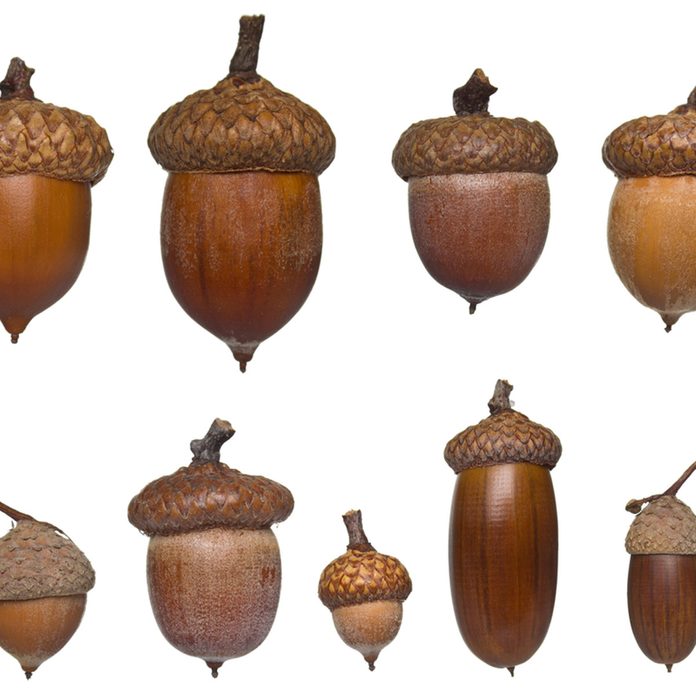
How to Identify Trees By Seed Comparing
The seeds themselves can assist with more specific identification. Say you have an oak tree only you're non sure what kind. Leaf shape is highly variable on oaks, even on the aforementioned specimen. A better indicator may exist the acorns. Get your hands on a good guide such every bit The Audubon Society Field Guide to Northward American Trees (a mainstay in bookstores for decades). Then compare the acorns to what'southward pictured in the guide. Yous'll find that acorns can be small (black oak), big (bur oak), oblong (English oak) or barrel shaped (red oak). Some are even striped (pin oak). The cap that partially encases an acorn is too unique in size, shape and texture.
eleven / 12
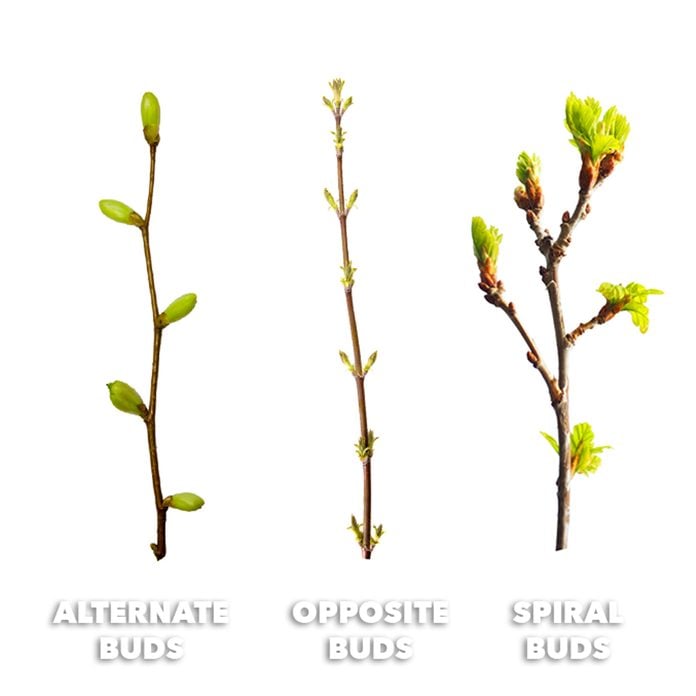
How to Identify Trees By Leaf Bud Arrangement
Buds tin be helpful in identifying tree species in winter, when deciduous copse are without foliage. Those at the finish of a twig are called terminal buds, while those growing forth the twig are lateral buds. The arrangement of these lateral buds can assistance found a tree'due south identity. Alternate buds, found on elms, are arranged in alternating pairs on contrary sides of the stem. The opposite buds of maple are directly facing each other on the stem. And screw buds ringlet alternately around the stem, as seen on oaks.
12 / 12
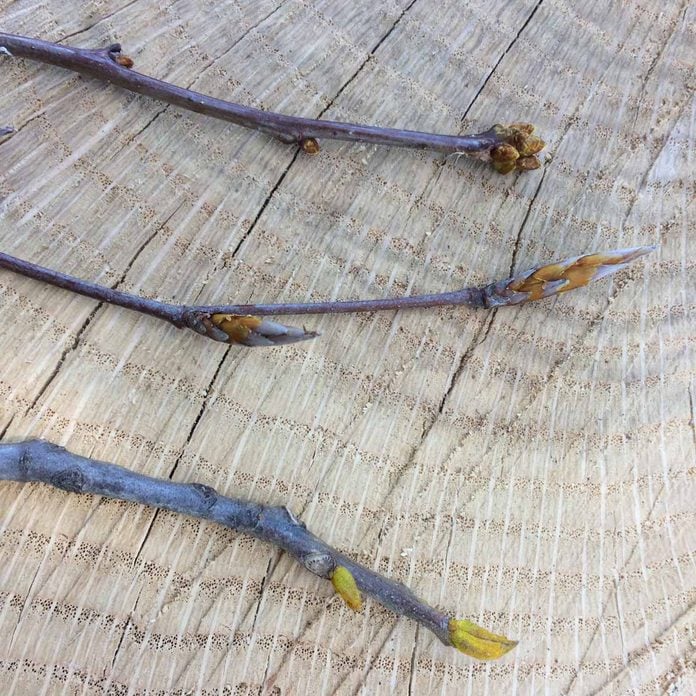
How to Identify Trees By Leaf Bud Appearance
Some trees accept distinctive buds, such as the sharply pointed buds of beech and the small, clustered buds of oak, which are covered by protective scales. Bitternut hickory is difficult to miss—just look for the sulfur-yellow buds when the tree is dormant.
Thinking of planting a tree? Don't make these tree-planting mistakes.
Originally Published: June 10, 2019
Source: https://www.familyhandyman.com/list/how-to-identify-tree-species/
0 Response to "How to Tell What Kind of Tree I Have"
Postar um comentário